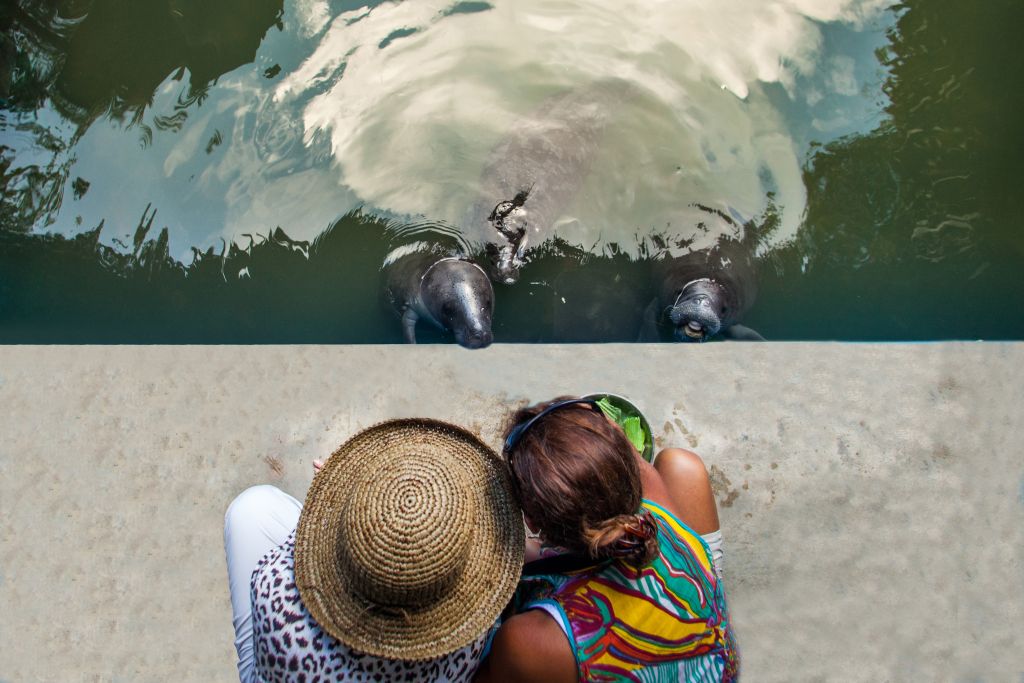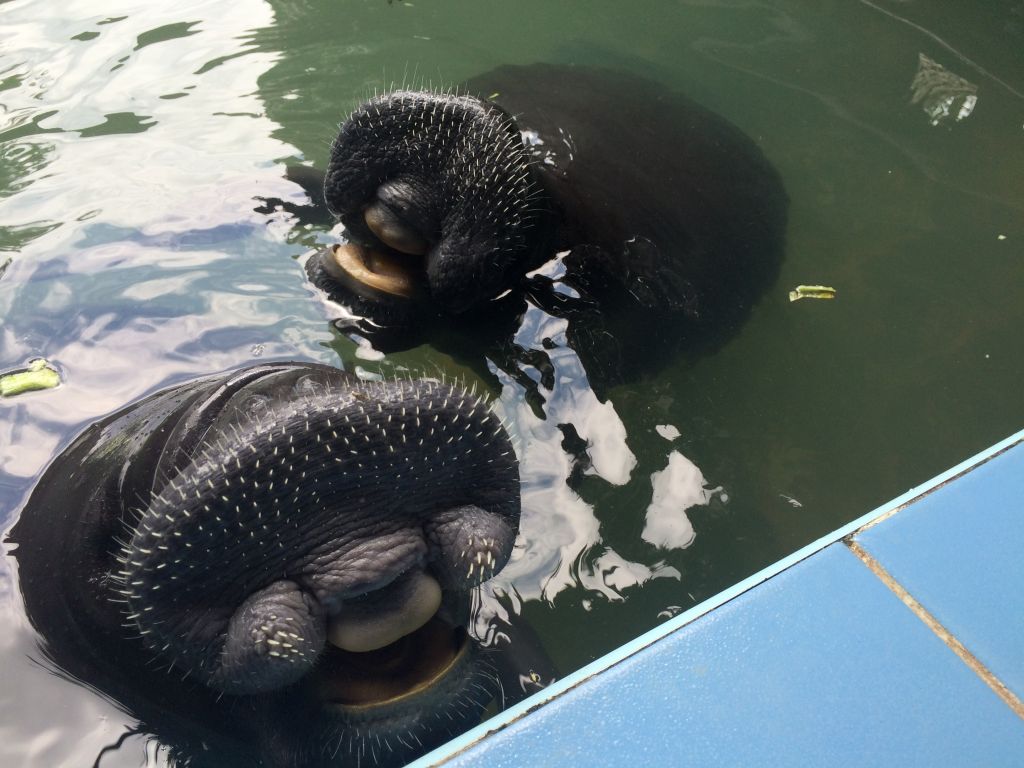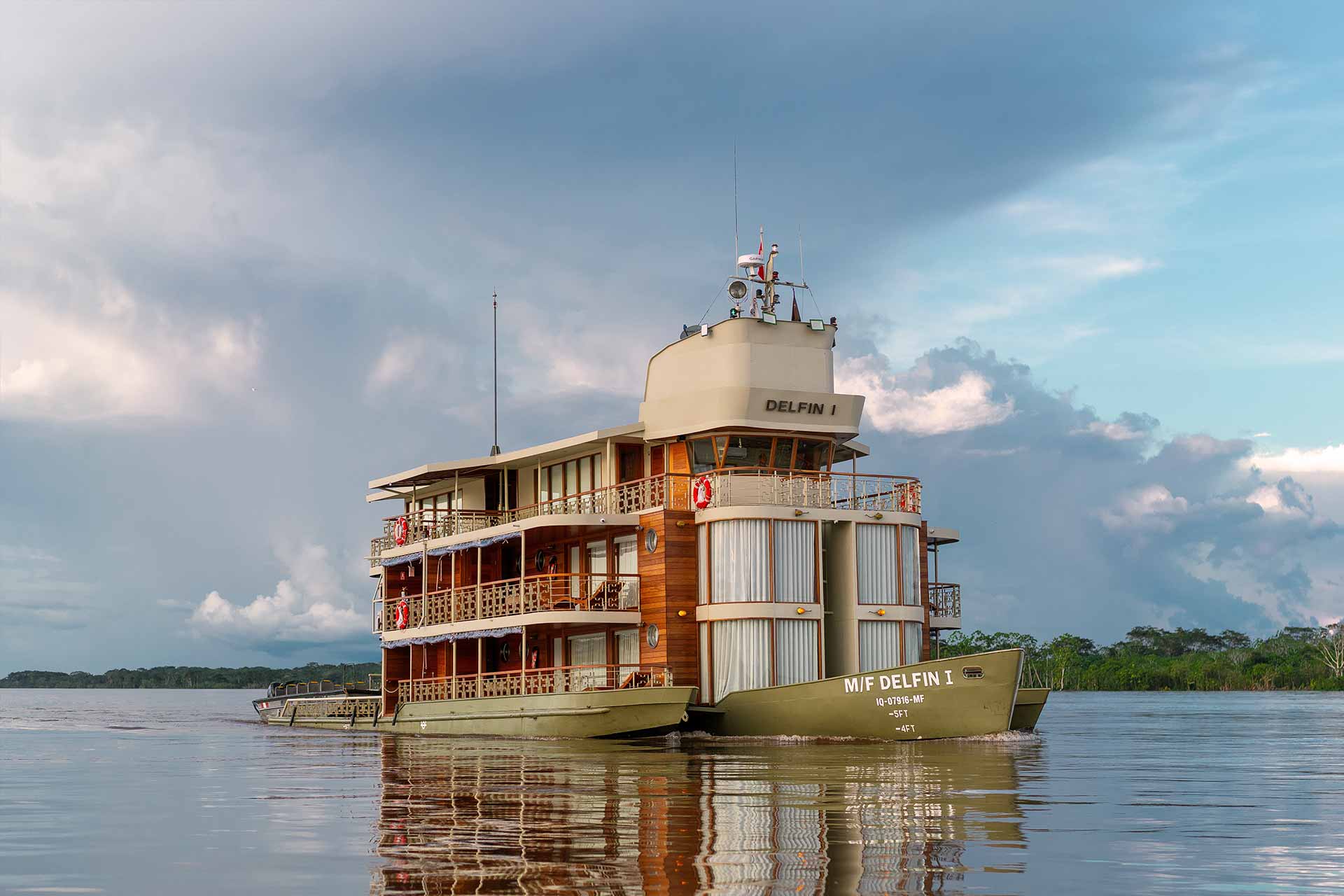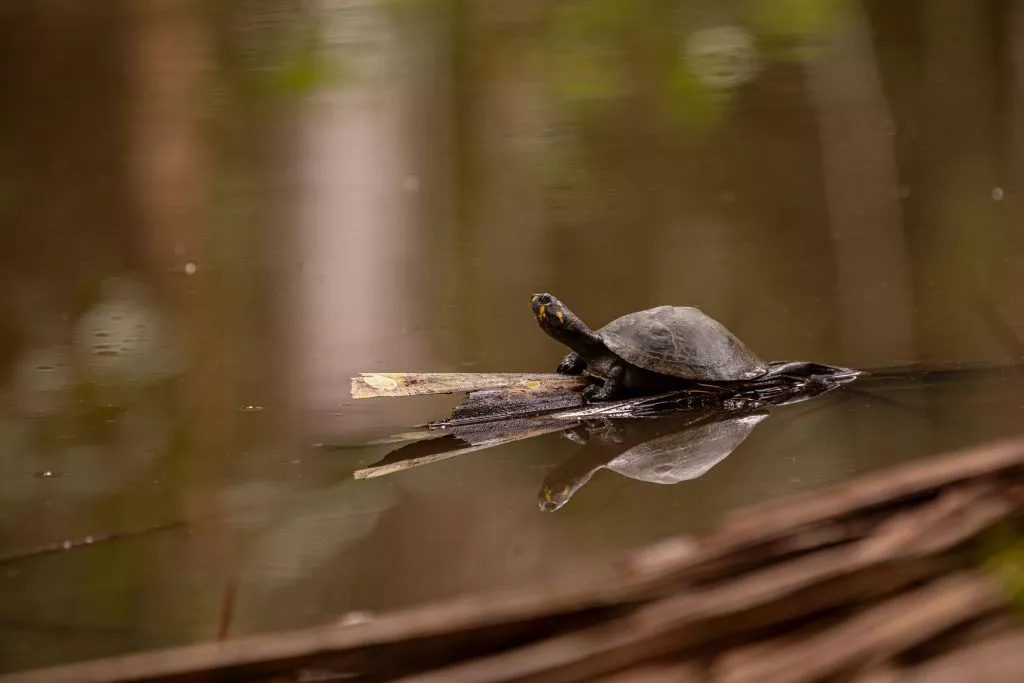Manatee Appreciation Day
The Amazon manatee, also known as the South American manatee, is a fascinating aquatic mammal that is found in the Amazon River basin and other rivers and freshwater habitats throughout South America. Despite their unique and interesting characteristics, Amazon manatees are currently facing threats from habitat loss, hunting, accidental entanglement in fishing gear, and other human activities. In this blog post, we will explore some of the fascinating facts about the Amazon manatee, as well as the current conservation efforts being made to protect this species.
Manatee Appreciation Day is an annual observance that takes place on the last Wednesday in March. In 2023, Manatee Appreciation Day is celebrated today, on March 29th.
Today we are dedicated to raising awareness about the importance of manatees and the need to protect them and their habitats. Manatees are large, gentle, herbivorous marine mammals that are found in warm, shallow waters of the Amazon Rainforest, particularly in the Peruvian Amazon Basin. Manatees face a number of threats, including habitat loss, boat strikes, and accidental entanglement in fishing gear.

Size and Appearance
Amazon manatees are among the largest aquatic mammals in South America, with adults growing up to 3 meters (10 feet) in length and weighing up to 590 kilograms (1,300 pounds). They have a grayish-brown skin color, a round head with a flat snout, and flippers that are used for swimming and manipulating food. Their thick skin gives them a wrinkled appearance, which is a unique feature among aquatic mammals.
Diet and Habitat
The Amazon manatee is a herbivore and feeds on aquatic vegetation such as water hyacinth, water lettuce, and other aquatic plants. They are typically solitary animals but can sometimes be seen in groups. They spend most of their time under dark Amazonian waters, which makes them very hard to spot. Amazon manatees are slow-moving and spend most of their time grazing on aquatic plants. They live in freshwater rivers, lakes, and swamps throughout South America, including the Amazon Basin, the Orinoco River, and other river systems in Brazil, Colombia, Ecuador, Guyana, Peru, and Venezuela.
Reproduction and Lifespan
Amazon manatees give birth to a single calf after a gestation period of 12-14 months. Calves can weigh up to 30 kilograms (66 pounds) at birth. They have a lifespan of up to 30 years in the wild.
Conservation Status and Threats
The Amazon manatee is listed as a vulnerable species by the International Union for Conservation of Nature (IUCN) due to habitat loss, hunting, accidental entanglement in fishing gear, and other threats. Amazon manatees are hunted for their meat and oil, and they are also accidentally caught in fishing nets and lines. Habitat loss due to dam construction and pollution is also a major threat to their survival.
Conservation Efforts
Various conservation efforts are underway to protect the Amazon manatee. Habitat protection is a key component of these efforts, with many organizations working to preserve the Amazon’s natural environment. Captive breeding programs have also been established to help increase the population of Amazon manatees in the wild. Education and awareness campaigns aimed at reducing hunting and accidental killing are also being implemented, with the hope of reducing the negative impact of human activities on this species.

The Amazon manatee is a unique and fascinating aquatic mammal that plays a critical role in the rainforest ecosystem. While they face significant threats, efforts are being made to protect and conserve this species. As individuals, we can also play a role in protecting the Amazon manatee by supporting conservation organizations and being mindful of our impact on the environment. By working together, we can help ensure that the Amazon manatee continues to thrive for generations to come.
Our commitment
As a company, Delfin Amazon Cruises recognizes the importance of protecting them, that’s why we have included a visit to a manatee rescue center as part of all of our programs.
The manatee rescue center provides a safe haven for injured and orphaned manatees, where they can be rehabilitated and eventually released back into the wild. The center also works to educate the public about the importance of conservation and the impact of human activities on this species.
By including a visit to the manatee rescue center in our programs, we are not only providing our guests with an opportunity to witness the beauty of this unique species up close but also raising awareness about the importance of protecting and conserving the Amazon manatee.
During the visit, passengers can learn about the rescue and rehabilitation process and interact with the manatees in a responsible and sustainable way. By supporting the work of the rescue center, we are also helping to fund the center’s efforts to rescue and rehabilitate injured or orphaned manatees.
Overall, Manatee Appreciation Day provides an opportunity for people to come together to learn about and appreciate these gentle giants and to take action to protect them for generations to come.




